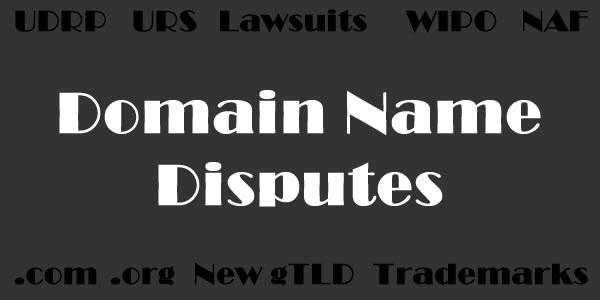You don’t see this very often. Actually I don’t think I have ever seen a brand protection agency produce a guide on what trademark owners need to know to avoid reverse domain name hijacking!
Reverse domain name hijacking (also known as reverse cybersquatting or commonly abbreviated as ‘RDNH’), occurs where a trademark owner attempts to secure a domain name by making false cybersquatting claims against a domain name’s owner. This often intimidates domain name owners into transferring ownership of their domain names to trademark owners to avoid legal action, particularly when the domain names belong to smaller organizations or individuals. Or simply the trademark owners hope the rightful owner will not reply to the complaint or the owner will not be represented properly in the proceedings. Or they simply hope to get a corrupted panelist to rule in their favor.
Paragraph 15(e) of the UDRP Rules defines reverse domain name hijacking as the filing of a complaint in bad faith, resulting in the abuse of the UDRP administrative process.
Ken Linscott, product director, Domains and Security and Natalie Leroy, senior IP advisor, at CSC Digital Brand Services wrote a post titled “What trademark owners need to know to avoid reverse domain name hijacking“.
They explain how reverse domain name hijacking is defined and then they offer advice on what can companies do to avoid RDNH:
- Make sure the trademark or the rights predate the domain name registration or acquisition by the last registrant (in case a domain name has changed hands). If prior rights can’t be proven, it will be difficult to claim “bad faith,” since under the UDRP, this hinges on registration and use.
- Document how the trademark was known at the time the disputed domain name was registered; how well it’s known now is irrelevant if the domain name is 20 years or older.
- Substantiate claims. Don’t make allegations in one’s favor or discredit the respondent without evidence.
- Be honest with the panel. If there was an attempt to buy the domain name from the registrant before starting the UDRP, say so. No panel is going to blame a complainant for trying to recover a domain name more quickly or cheaply than a UDRP, however they’re not going to be impressed if a complainant says the respondent tried to sell the domain name to them for an unreasonable fee if the complainant initiated the discussion.
- Avoid blatant attempts to entrap the respondent or mislead the panel, for instance, only putting forward incomplete material evidence, details of which then come to light when the registrant files his response.
- Finally, carefully consider how and who to trust to file disputes. A boilerplate approach without careful consideration of the facts risks leaving the trademark owner open to not just a loss, but perhaps the accusation of below the belt tactics.
Read the complete post here.
 OnlineDomain.com Domain Name News & Opinions
OnlineDomain.com Domain Name News & Opinions



 OnlineDomain.com - © Copyright 2012-2026 - All Rights Reserved
OnlineDomain.com - © Copyright 2012-2026 - All Rights Reserved